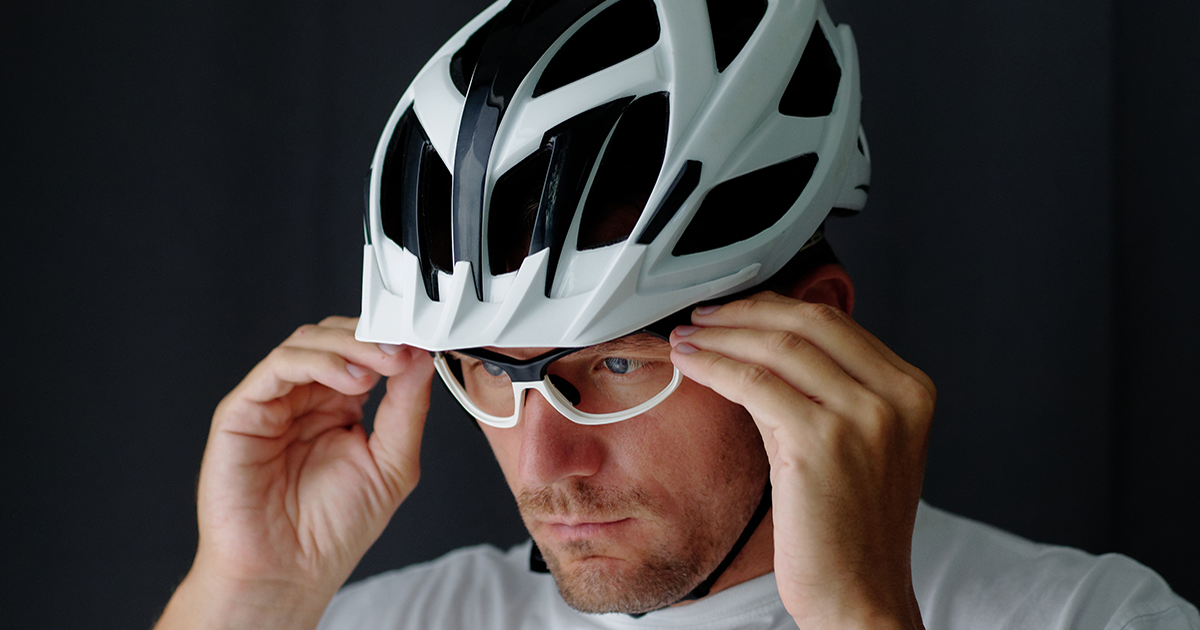Playing sports is lots of fun and good for your health – until you take a pitch or a stick to the eye. Even watching a game in person presents a risk to your vision.
Each year, an estimated 100,000 people are hurt by sports-related eye injuries. About 13,500 of these injuries result in permanent vision loss. More than 90 percent of these injuries can be prevented.
Here are answers to the most frequently asked questions about sports eye safety, provided by the American Academy of Family Physicians and the American Academy of Ophthalmology.
What sports pose the greatest risk to the eyes?
Eye injuries can happen in almost any sport, but some sports are at higher risk than others.
One study found that basketball was the leading cause of sports-related eye injuries in the United States followed by baseball, softball, airsoft rifles, pellet guns, racquetball and hockey.
Boxing and full-contact martial arts pose an extremely high risk of serious and even blinding eye injuries. There is no satisfactory eye protection for boxing, although thumbless gloves may reduce the number of boxing eye injuries.
Be careful during activities or games involving projectiles and other sharp objects that could create injury if in contact with the eye.
What are the most common types of sports-related eye injuries?
They basically fall into three categories: blunt trauma, penetrating injuries and radiation injury from sunlight.
Blunt trauma happens when something hits you in the eye and can cause an orbital blowout fracture (a broken bone under the eyeball), a ruptured globe (broken eyeball) and a detached retina. Bruising of the eye and eyelid (“black eye”) looks bad but usually is a less serious injury.
Penetrating injuries are not very common but can happen if your eyeglasses break while you are wearing them or if another person’s finger scratches you in the eye. Injuries range from mild to deep cuts. Fishing hooks have caused penetrating eye injuries.
Radiation injuries are caused by exposure to ultraviolet light from the sun. These injuries are most common in sports such as snow skiing and water skiing and other water sports.
How can I protect myself from sports-related eye injuries?
The eye doctors at VisionQuest remind athletes that the great majority of sports-related eye injuries can be avoided by simply wearing the proper protection.
Only 3-mm polycarbonate lenses should be used in protective sports eyewear. These lenses are available in plain and prescription forms. Polycarbonate lenses are impact resistant. They also are the thinnest and lightest lenses available.
Protective sports glasses should be worn for sports such as basketball, racquet sports, soccer and field hockey. Choose eye protectors recommended by PreventBlindnesss.org.
Never wear protective devices without lenses. Contact lenses and sunglasses will not protect your eyes from blunt or penetrating injuries. Wearing a helmet or faceguard cannot protect your eyes, because your eyes are still exposed to an opponent’s fingers or other sports equipment. The helmet also can be knocked off, leaving your eyes vulnerable to injury. Your eye doctor can help you choose eye protection for your specific sport.
What sports require face masks or face shields for eye protection?
In ice hockey and men’s lacrosse, wear a helmet with a polycarbonate face mask or wire shield. Hockey face masks should be approved by USA Hockey.
What about spectator eye safety at sporting events?
Spectators at sporting events should also be careful. Balls, bats, and players can end up in the stands at any time. Keep your eyes on the game and watch out for foul balls and flying objects.
Our team at VisionQuest Eyecare can help you choose eye protection for your specific sport. Schedule an appointment online.

Dr. Collin Rush is passionate about bringing clear eyesight and better eye health to the community. Having graduated in the top 1% of his class at Indiana University School of Optometry, Dr. Rush primarily focuses on dry eye and keratoconus but is also trained in laser therapies for glaucoma and secondary cataracts.

